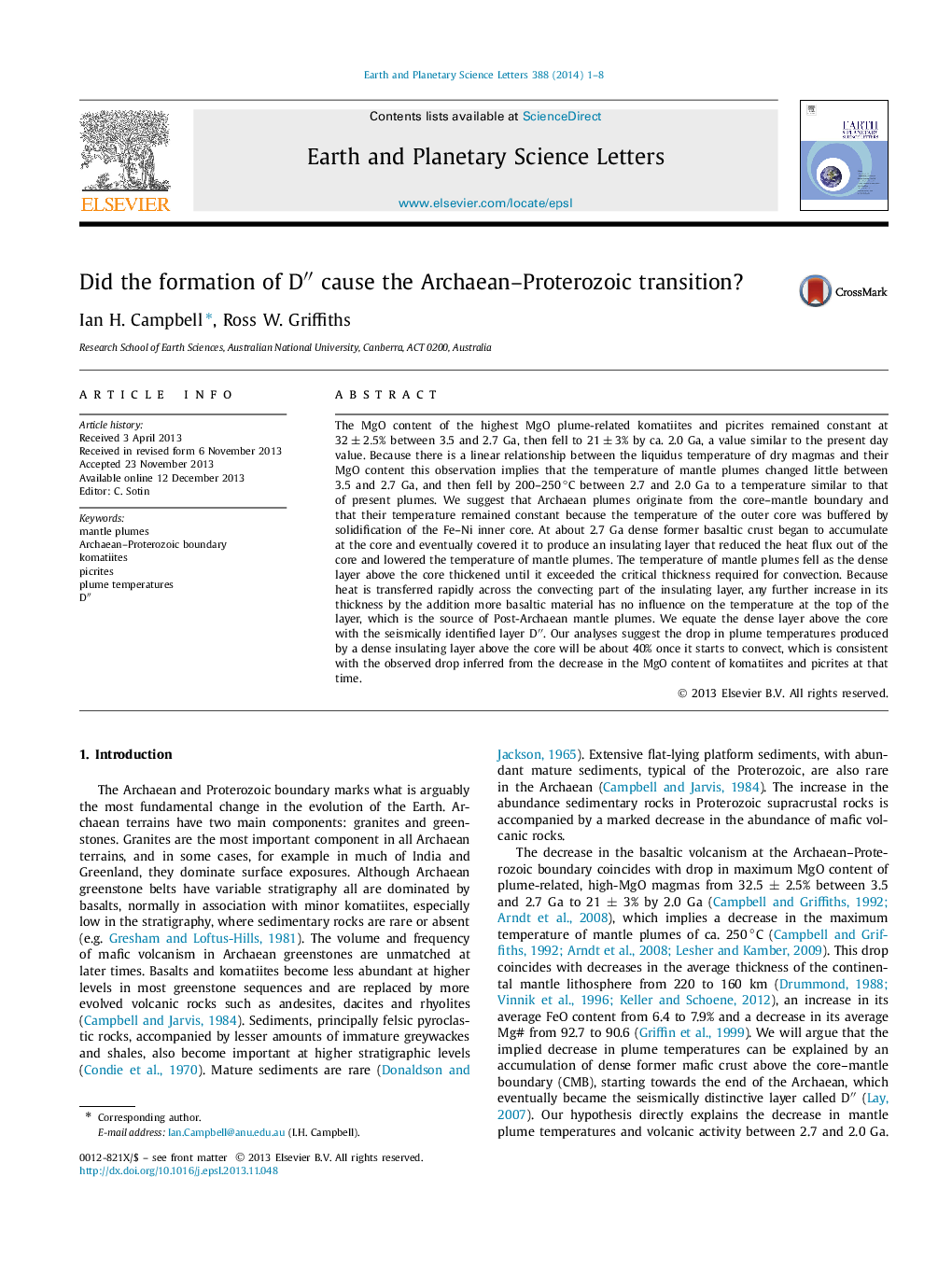| کد مقاله | کد نشریه | سال انتشار | مقاله انگلیسی | نسخه تمام متن |
|---|---|---|---|---|
| 6429746 | 1634768 | 2014 | 8 صفحه PDF | دانلود رایگان |

- Inner core crystallization buffered plume temperatures from 3.5 and 2.7 Ga.
- Between 2.7 and 2.0 Ga plume temperatures fell as Dâ³ formed an insulating layer above the core.
- Plume temperature remained constant from 2.0 Ga because Dâ³ began to convect.
The MgO content of the highest MgO plume-related komatiites and picrites remained constant at 32±2.5% between 3.5 and 2.7 Ga, then fell to 21±3% by ca. 2.0 Ga, a value similar to the present day value. Because there is a linear relationship between the liquidus temperature of dry magmas and their MgO content this observation implies that the temperature of mantle plumes changed little between 3.5 and 2.7 Ga, and then fell by 200-250â°C between 2.7 and 2.0 Ga to a temperature similar to that of present plumes. We suggest that Archaean plumes originate from the core-mantle boundary and that their temperature remained constant because the temperature of the outer core was buffered by solidification of the Fe-Ni inner core. At about 2.7 Ga dense former basaltic crust began to accumulate at the core and eventually covered it to produce an insulating layer that reduced the heat flux out of the core and lowered the temperature of mantle plumes. The temperature of mantle plumes fell as the dense layer above the core thickened until it exceeded the critical thickness required for convection. Because heat is transferred rapidly across the convecting part of the insulating layer, any further increase in its thickness by the addition more basaltic material has no influence on the temperature at the top of the layer, which is the source of Post-Archaean mantle plumes. We equate the dense layer above the core with the seismically identified layer Dâ³. Our analyses suggest the drop in plume temperatures produced by a dense insulating layer above the core will be about 40% once it starts to convect, which is consistent with the observed drop inferred from the decrease in the MgO content of komatiites and picrites at that time.
71
Journal: Earth and Planetary Science Letters - Volume 388, 15 February 2014, Pages 1-8